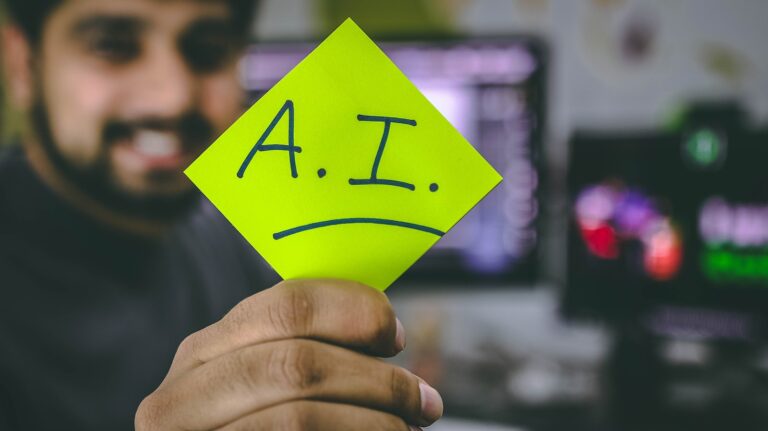Understanding A.I.: A Beginner's Guide to Artificial Intelligence and Its Applications

Throughout my website, following the links to any of my affiliates and making a purchase will help support my efforts to provide you great content! My current affiliate partners include ZimmWriter, LinkWhisper, Bluehost, Cloudways, Crocoblock, RankMath Pro, Parallels for Mac, AppSumo, and NeuronWriter (Lifetime Deal on AppSumo).
For tutorials on how to use these, check out my YouTube Channel!
Artificial intelligence (AI) has become an essential part of our everyday lives, transforming the way we work, play, and interact with the world. In this beginner’s guide, we’ll provide a comprehensive overview of AI, including its core concepts, applications, and how it’s shaping the future of various industries.
Although I typically use Google App Script because of the usability and general comfort by most people out there. However, I have to use Python for these examples because Google App Script falls short in how it can be used.
What is Artificial Intelligence?
Artificial intelligence refers to the development of computer systems that can perform tasks that would typically require human intelligence, such as learning, reasoning, problem-solving, perception, and understanding natural language. AI encompasses various techniques and approaches, including machine learning, deep learning, and neural networks.
Machine Learning
Machine learning is a subset of AI that focuses on creating algorithms that can learn from and make predictions based on data. These algorithms can be trained on large datasets and improve their performance as they process more data. Machine learning is often used for tasks such as image recognition, natural language processing, and recommendation systems.
#Python code
# Example of a simple linear regression using scikit-learn
from sklearn.linear_model import LinearRegression
X = [[1], [2], [3], [4]] # Features
y = [2, 4, 6, 8] # Labels
model = LinearRegression()
model.fit(X, y)
predictions = model.predict([[5], [6]])
Deep Learning
Deep learning is a more advanced form of machine learning that utilizes artificial neural networks to process data. These networks consist of layers of interconnected nodes or neurons that can learn to represent complex patterns and features. Deep learning is particularly effective for tasks such as image recognition, speech recognition, and natural language processing.
#Python code
# Example of a simple deep learning model using Keras
from keras.models import Sequential
from keras.layers import Dense
model = Sequential()
model.add(Dense(units=64, activation='relu', input_dim=100))
model.add(Dense(units=10, activation='softmax'))
model.compile(loss='categorical_crossentropy', optimizer='adam')
Neural Networks
Neural networks are the foundation of deep learning, inspired by the structure and function of the human brain. They consist of layers of interconnected nodes or neurons, which receive input, process it, and transmit the output to other nodes in the network. Neural networks are capable of learning complex patterns and representations by adjusting the weights of the connections between the neurons.
#Python code
# Example of a simple neural network using TensorFlow
import tensorflow as tf
model = tf.keras.Sequential()
model.add(tf.keras.layers.Dense(units=64, activation='relu', input_shape=(100,)))
model.add(tf.keras.layers.Dense(units=10, activation='softmax'))
model.compile(optimizer='adam', loss='categorical_crossentropy')
AI Applications
AI has a wide range of applications across various industries, from marketing to finance to healthcare. Here are some examples of how AI is transforming these sectors:
Marketing
AI can analyze vast amounts of data to identify patterns and trends, helping marketers create targeted campaigns, improve customer engagement, and predict consumer behavior. Some common applications of AI in marketing include:
- Content creation
- Sentiment analysis
- Personalized recommendations
Finance
AI is revolutionizing the financial sector by automating tasks, improving decision-making, and reducing risk. Some common applications of AI in finance include:
- Fraud detection
- Algorithmic trading
- Risk assessment
Healthcare
AI is making a significant impact on healthcare by enabling faster diagnoses, improved patient care, and more effective treatments. Some common applications of AI in healthcare include:
- Medical image analysis
- Drug discovery
- Disease prediction
The Future of AI
As AI technology continues to advance, we can expect to see even more innovative applications and groundbreaking discoveries. In particular, OpenAI’s suite of tools, such as ChatGPT, DALLE-2, and Whisper, are set to play a crucial role in shaping the future of AI.
ChatGPT
ChatGPT is a state-of-the-art neural language model that can generate human-like text. It can be used for a variety of applications, such as content generation, summarization, translation, and more.
#Python code
import openai
# Using OpenAI's API to generate text with ChatGPT
response = openai.Completion.create(
engine="gpt-3.5-turbo,
message = ['role':'user','content':'Write me a sonnet.'],
max_tokens=1024,
n=1,
stop=None,
temperature=0.8,
)
generated_text = response.choices[0].message
DALLE-2
DALLE-2 is an AI model that can generate high-quality images from textual descriptions. This groundbreaking technology has numerous potential applications, including graphic design, advertising, and gaming.
#Python code
import openai
# Using OpenAI's API to generate an image with DALLE-2
response = openai.Image.create(
engine="image-alpha-001",
prompt="Create an image of a beautiful sunset over the ocean",
n=1,
size='256x256',
temperature=0.8,
)
generated_image = response.choices[0].url
Whisper
Whisper is an automatic speech recognition (ASR) system that can transcribe spoken language into text. It has a wide range of applications, from transcription services to voice assistants.
#Python code
!pip install -U openai-whisperimport whisper
model = whisper.load_model("base")
result = model.transcribe("https://example.com/path/to/audio/file.mp3")
result["text]
Conclusion
The world of AI is rapidly evolving, offering exciting opportunities for individuals and businesses alike. By understanding the fundamentals of AI and exploring the cutting-edge tools provided by OpenAI, anyone can harness the power of AI to transform their workflow and achieve greater success. As we continue to advance and innovate in the field of AI, we can expect even more groundbreaking developments that will change the way we work and live.
